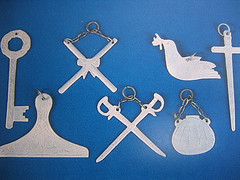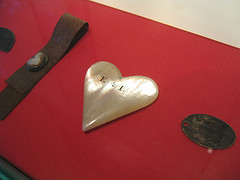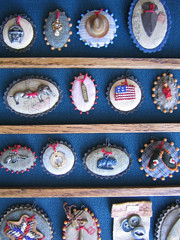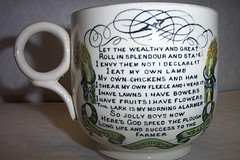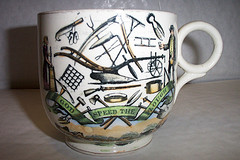A Word about the Word Nanny
Someone mentioned in passing conversation today that the anti-smoking laws in New York were a form of nannyism. Hmm. I can see why, though I had never heard the expression before.
According to web definitions, the word "nanny" refers to a custodian of children or a child's nurse. The traditional nanny is a servant in a large household who looks after a rich person's children full-time, and might be expected to do other domestic work as well.
I wonder why peddler dolls were given the name "notion nannies" when they first appeared in America. Was it a misinterpretation of the English peddler dolls? The appearance of Mary Poppins at the door with her bottomless carpetbag comes to mind.
I have discovered that the word "notion" also raises questions. People here tend to think of it in reference to vague impressions, general inclusive concepts, odd, fanciful, capricious ideas and whimsy. In the US it is also used when referring to personal articles or sewing items like buttons or needles, which at least explains the first half of "notion nanny" from an American historical perspective.
I like the notion of a custodian of ideas. Read more...
According to web definitions, the word "nanny" refers to a custodian of children or a child's nurse. The traditional nanny is a servant in a large household who looks after a rich person's children full-time, and might be expected to do other domestic work as well.
I wonder why peddler dolls were given the name "notion nannies" when they first appeared in America. Was it a misinterpretation of the English peddler dolls? The appearance of Mary Poppins at the door with her bottomless carpetbag comes to mind.
I have discovered that the word "notion" also raises questions. People here tend to think of it in reference to vague impressions, general inclusive concepts, odd, fanciful, capricious ideas and whimsy. In the US it is also used when referring to personal articles or sewing items like buttons or needles, which at least explains the first half of "notion nanny" from an American historical perspective.
I like the notion of a custodian of ideas. Read more...
